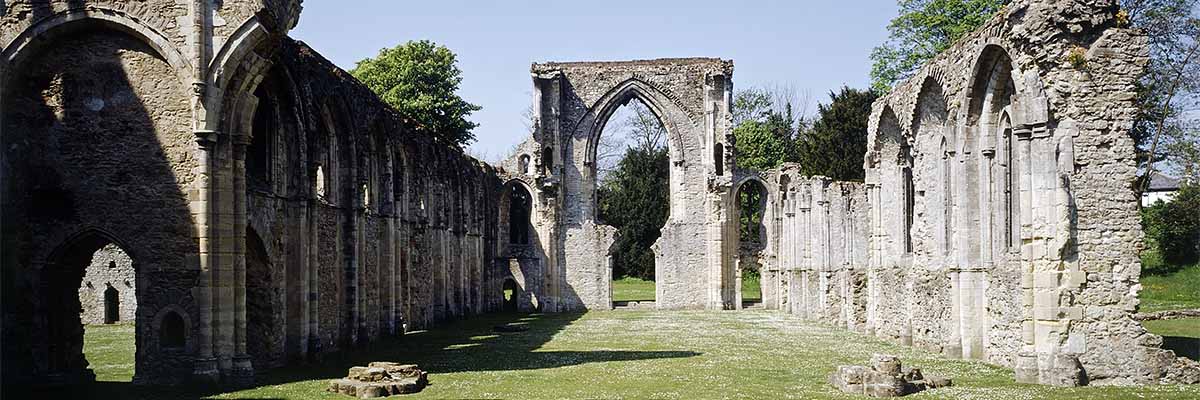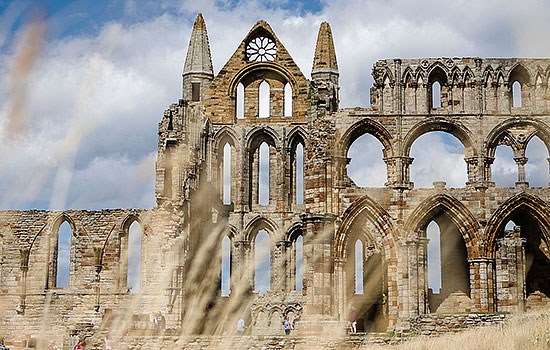History of Netley Abbey
Standing close to Southampton Water, Netley Abbey is the most complete surviving Cistercian monastery in southern England. After the Suppression of the Monasteries the buildings were converted into a mansion for Sir William Paulet. The ruins now reflect over 800 years of change, during which the abbey was transformed from a monastic house to a mansion house, and later to a romantic ruin.

Monastic History
Peter des Roches, the powerful Bishop of Winchester, founded the abbey in 1238, but he died later that year before construction began. Work continued without him, and one year later a colony of monks arrived from nearby Beaulieu Abbey. King Henry III (r.1216–72) later became a patron of the monastery.
The monks probably lived in temporary wooden buildings while the stone abbey was being built. When complete, it was home to about 15 monks and 30 lay brothers, officials and servants.
From Abbey to Mansion House
Monastic life at Netley Abbey came to an abrupt end in 1536, when Henry VIII suppressed the lesser monasteries. This heralded a new phase for the abbey, however, when it was granted to Sir William Paulet as a reward for his loyal service to the king.
Paulet was the 1st Marquess of Winchester, a powerful political figure in Hampshire. He held important posts, including treasurer of the royal household. He set about transforming the abbey into his private mansion, fit for a nobleman of his standing. Cleverly reusing many of the abbey buildings, he created a fashionable Tudor courtyard house.
In the cloister, once the hub of monastic life, a central courtyard was created. The most dramatic change was the demolition of the monks’ refectory, removed to make way for a grand turreted entrance.
The changes that Paulet made were largely in brick. However, these conversions are difficult to see today, as they were largely removed in the later 19th century.
The Romance of Netley Abbey
Sir William Paulet’s mansion was occupied until 1704, when the owner sold it for building materials. The abbey was only saved when a demolition worker was killed, causing work to cease.
When this house was abandoned, however, and the neglected site became overgrown with trees and ivy, it came to be celebrated as a romantic ruin. As the ‘Romantic Movement’ grew in strength, many authors and artists visited the abbey to find inspiration. Set among the wild, wooded slopes above Southampton Water, overgrown Netley appeared to be the perfect medieval ruin.
John Constable came to paint here, and writers such as Thomas Gray enthused about the abbey. It is reported that Jane Austen visited Netley, finding inspiration for her novel Northanger Abbey (published in 1817). The writer Horace Walpole explained in a letter to a friend in 1755:
The ruins are vast, and retain fragments of beautiful fretted roofs pendent in the air, with all variety of Gothic patterns of windows wrapped round and round with ivy … they are not the ruins of Netley, but of Paradise. – Oh! the purple abbots, what a spot had they chosen to slumber in!
In the 1840s the abbey became a popular place for local people to come for tea, dancing and music. Some visitors complained that the romantic atmosphere was ruined by ‘the popping of ginger beer’.
Later, changing attitudes led the owner to clear the vegetation and debris from the ruins. All traces of the later Tudor alterations were removed, and the abbey ruins were returned to their ‘pristine elegance’.
Further Reading
Hare, J, ‘Netley Abbey: monastery, mansion and ruin’, Proceedings of the Hampshire Field Club Archaeology Society, 49 (1994), 207–77
Thompson, AH, Netley Abbey, Hampshire (HMSO guidebook, London, 1937)


